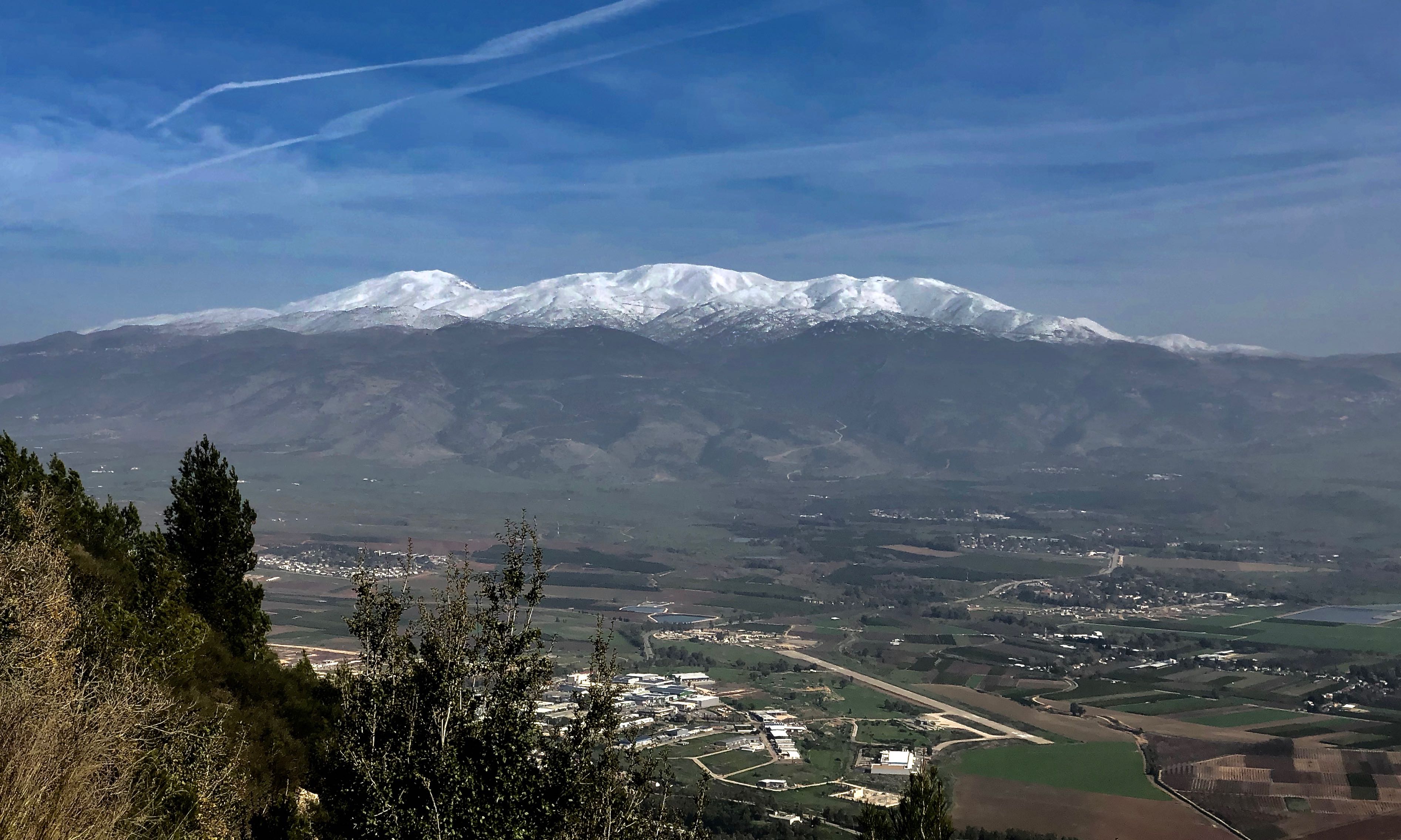Snow (February 2019) #
Where I grew up it snows every now and then. Maybe once a year on average, and every few years we’d get a couple of days, or one really good day. But snow was never a real part of my life, never something I needed to deal with for months on end, or had the chance to explore in my own time and at length.
As such, like many people who grow up in warmer climates, I have developed a fascination for snow. It draws me to it. Whenever I see snow, usually dusting the top of some far away mountain, I have a very strong desire to go to it, to walk in it, feel it in my hands.
It surprises people to know that there is snow in Israel. For a couple of months a year in the middle of winter, snow can be seen regularly on the top of the Hermon mountain, the highest point in Israel at 2,236 metres, which is part of the anti-Lebanon mountain range. These mountains run along the Lebanese-Syrian border to the Golan Heights, whose western two thirds are occupied by Israel.
I thought I had a weird thing for snow until I moved here and saw Israelis in winter. Whereas I at least had the occasional day here and there as a child to make its acquaintance, in passing, many young Israelis have never seen snow in their lives. They are truly drawn to it, with a real and childlike sense of wonder.
Last month some friends were visiting us in Israel and we took them up to the North, which I think is the most beautiful part of the country and is not something many tourists see. It was the morning after the first significant snowfall of the season and we decided to drive up the mountain to marvel at the snow, feeling its magnetic pull as we climbed up the winding road past the medieval fortress.

The road to Mt Hermon passes through the Druze village of Majdal Shams (Aramaic for Tower of the Sun). Majdal is a labyrinthine town which has a strange almost European vibe in the winter, until you remember that it was under martial law for the first thirteen years of the Israeli occupation until it was officially annexed in 1980. So less like Europe in that sense. Druze villages in Israel are a little surreal, especially in the Golan Heights where many Druze very reluctantly became citizens of the State of Israel. The Druze religion is highly secretive, a little understood mix of Islam and Greek philosophy with an emphasis on hospitality but absolute non-assimilation. So driving through their villages you feel a little like you’re not supposed to be there, but when you walk into a restaurant you are always greeted with a smile and fantastic food.
We drove through the town and on towards the mountain, but were stopped just a hundred metres up the road at a closed gate. The mountain was closed today because too much snow had fallen and the authorities had not yet had time to clear the road and make it safe.
The comedic value of a ski site not being able to operate because of too much snow not lost on us, we piled back in the car and drove back to the village in search of knafeh, leaving behind the five or six Israeli families who had decided even the dirty snow scraped off the road into the ditches on the side was wondrous enough for their children’s first experience.